JUICES IN STOCK AS OF 9-1-17 AND GRAPE ARRIVALS
Juices In Stock as of 9/1/17 and Grape Arrivals
JUICES:
Labels Available California Select:
|
Variety |
|
Barbera |
On the Road…. Safe to say all of this should be in by the Friday September 8th!
GRAPES:
|
Variety |
Label |
|
Merlot |
Smiling Baby |
|
Zinfandel |
Valley Beauty |
|
Seedless |
Smiling Baby |
|
Grenache |
Smiling Baby |
|
Zinfandel |
Valley Beauty |
|
Albarino |
Cry Baby |
|
Alicante |
O’Caprio |
|
Petite Sirah |
Cry Baby |
|
Syrah |
Cry Baby |
|
Ruby Cab |
Uva di California |
|
Old Vine Barbera |
Lucerene |
|
Old Vine Barbera |
Lugano |
|
Pinotage |
Costmagna |
|
Merlot |
Smiling Baby |
|
Pinot Noir |
|
|
Albarino |
Lodi Gold |
|
Chardonnay |
Lodi Gold |
|
Pinot Grigio |
Lodi Gold |
|
Viognier |
Lodi Gold |
|
Zinfandel |
Valley Beauty |
|
Grenache |
Smiling Baby |
|
Zinfandel |
Lucerene |
|
Chardonnay |
Lodi Gold |
|
Seedless |
Lucerene |
|
Seedless |
Loidi Gold |
|
Black Muscat |
Cry Baby |
|
Symphony |
Cry Baby |
|
Seedless |
Cry Baby |
|
Tempranillo |
Cry Baby |
|
Alicante |
O’Caprio |
|
Seedless |
Miss Seedless |
|
Old Vine Barbera |
Lugano |
JUICES:
Labels Available: California Select, Cry Baby, Colina
|
Variety |
|
Barbera |
Summer Sangria Recipes
As summer comes to an end and the fall harvest begins we wanted to share some fun Sangria recipes for the weekend. Happy Friday!
Pink Lemonade Sangria
Makes about 1 gallon
2 750ml bottles of Pinot Grigio
1 can frozen pink lemonade concentrate
1 quart tub of frozen strawberries (sugar added is fine) (frozen fruit breaks down better and leaks out more flavors as it defrosts plus it keeps it cold)
1 2 Liter of Sprite or Club Soda (depending on how sweet you want it)
*If you want to make it stronger, you can add strawberry schnapps however this will make it much sweeter so use club soda
Peach Mango Sangria
Makes about 1 gallon
2 750ml bottles of Pinot Grigio
1 cup of Peachtree schnapps
1/3 cup lime juice
1 bag frozen peaches
1 16oz can Goya Mango nectar
1 quart of Ocean Spray White Cranberry Peach Juice
1 liter of lime seltzer
Mixed Berry Malbec Sangria
Makes about 1 gallon
2 750 ml bottles Malbec
1 cup of Chambourd Raspberry Liquor
1/3 cup lime juice
1 quart of cran raspberry juice
1 liter of raspberry seltzer
1 bag of frozen mixed berries
Blackberry Pomegranate Cabernet Sangria
Makes about 1 gallon
2 750 ml bottles of Cabernet
1 cup black berry brandy
1 quart pomegranate juice
1 quart cranberry juice
1 small container of pomegranate seeds
1 small container of fresh blackberries
.5 quart raspberry or pomegranate seltzer
The Winemaker’s Think Tank: Vol 28- What are the best ways to get maximum extraction from red wine grapes to create a dark red wine?
What’s the Winemaker’s Think Tank?
Every Thursday we will post about a few frequently asked questions that our winemaker has answered. If you have a winemaking question you would like to have answered, please email us at support@juicegrape.com and we will try to get into next week’s post. Cheers! 🙂
What are the best ways to get maximum extraction from red wine grapes to create a dark red wine? And does a large primary fermenter make a difference in extracting color etc. from red wine grapes as opposed to a small primary fermenter of, say, 5 gallons?
There are many factors that can assist in the extraction of pigmentation and tannins from red wine grapes. A combination of some of these methods will ensure the best extraction of pigments in the red wine. The first method that will help ensure a deep bold color in red wines is a cold soak. After crushing the grapes into a fermenting tub, add 50ppm of potassium metabisulfite to prohibit microbial growth. After 6 hours, add pectic enzyme, specifically Color Pro, to help break down the grapes and assist with the color extraction. Now comes the more challenging part, the cold soak. The goal is to get the grape must to 40°F to extract the tannins but discourage bacterial growth; you may do this by bringing the fermentation tub into a cool area such as a walk in fridge (if you have that luxury) or a cold garage. If it is getting nice and cold at night, this may work fine for you. Otherwise you will have to chill down the must by adding frozen containers of water. You can fill up gallon jugs with water (that have been sanitized with potassium metabisulfite) and freeze them. Submerging quite a few of these in the must will chill it down significantly. However there is a risk of the jugs leaking. Another method would be to obtain 4inch PVC tubing and caps for the end. The PVC tubing will need to be as long as the height of your fermenting vessel. Place a secure cap on one end of the tube and seal it. (Always sanitize anything that will come in contact with your must with potassium metabisulfite first.) Fill the tube with ice and place standing upright (to the best of your ability) in the must. The solid skins and thickness of the must will help keep this upright. Then place another cap on the exposed end but do not seal it. You will have to replace the ice every 8 hours. If using 4 tubes per tub of must, this should keep the grape must around 40°F. If you can keep the must at 40°F, cold soaking it for 3 days will bring out deep pigments and provide dense color saturation. You will need to warm up the must to 65°F before setting yeast.
There are a few fermentation aids that will help with color securing. Opti-Red and FT Rouge are excellent products for this purpose. Opti-Red is a yeast derivative nutrient that helps to secure color and provide smoother tannin integration. FT Rouge is a blend of tannins that will also secure color pigments throughout fermentation. Using both of these compounds will greatly enhance the depth and richness of your red wine color.
Lastly, the shape of your fermentation vessel will mildly affect the color of your wine. If you have a tall cylindrical shaped fermentation bin, the cap will rise up and maintain less contact with the fermenting wine. Regular punch downs will be more critical. If you have a wider fermentation vessel, the surface area of the cap will increase, giving it more area to come in contact with the wine. These are subtle differences that won’t greatly affect the outcome of the wine and will not replace the incredibly important punch downs that should occur every 6-8 hours.
We hope this information helps with your winemaking. If you have any follow up questions or winemaking questions in general, please email us at support@juicegrape.com.
Clone 337 Cabernet
Good Morning from Madera! Our Clone 337 Cabernet is looking GORGEOUS and coming in at 21/22 Brix. We will work to harvest these around 24-25 Brix. According to the weather we will see a heat spike in the coming days. Central Valley harvest may be here before we know it! Seeing grapes as early as September 6th!
Clone 337 is best known as one of the premier French clones. It is similar to the Dijon clones and gives good yield, small intense berries, and very fruit forward flavors. These wines create a lush mouthfeel, have deep color, and intense dark fruit, chocolate, and intense tannins. Age in French or Hungarian Oak for an extra shot of intensity and depth.
Morning views of the 70 year old head trained Alicante Bouchet
Morning views of the 70 year old head trained Alicante Bouchet. Head pruned by hand and small bunches full of flavor and color. Old vine is an understatement…..
Alicante is a variety that was cultivated in 1866. Its deep red color makes it great for blending with lighter red wines such as Zinfandel and Pinot Noir. A popular grape during prohibition, the old school Italian blend consists of 18 boxes of Zinfandel, 2 boxes of Alicante, and 1 box of Muscat or make it straight for a delicious light bodies red.
The Winemaker’s Think Tank: Vol 27- What are Brix?
What’s the Winemaker’s Think Tank?
Every Thursday we will post about a few frequently asked questions that our winemaker has answered. If you have a winemaking question you would like to have answered, please email us at support@juicegrape.com and we will try to get into next week’s post. Cheers! 🙂
What are Brix?
Brix is the unit of measurement of the sugar content within fruit, and specifically to winemaking, grapes. One degree Brix is equal to 1 gram of sucrose within 100 grams (100ml) of liquid. The average Brix level for grapes is between 20-30.
We hope this information helps with your winemaking. If you have any follow up questions or winemaking questions in general, please email us at support@juicegrape.com.
Rose´ is Here to Stay
Rose´ has become an important part of the wine market. What originally started out as White Zinfandel has transformed into a large and growing wine category made from a lot of different wine grapes. One of the most important grapes used in the production of Rose´ is Grenache.
The Grenache grape is part of the original “Rhone Rangers” crew and one of the most widely planted red wine grape varieties in the world (over 500,000 acres planted so far..). It ripens late so it needs hot, dry conditions such as those found in Spain, where the grape most likely originated. Grenache flourishes in the AVA’s such as Central Valley, Fresno County, Lodi, and other Mediterranean–style climates.
Usually a brilliant ruby pink hue with notes of ripe strawberry, orange, hibiscus and sometimes with a hint of ripe peach. You’ll find Rose´of Grenache wines to have moderately high acidity, but most have quite a bit of color and body. Perfect pairing with this wine would be a summer evening and takeout Greek Gyros with dill tzatziki.
Below are some photos of our beautiful Grenache Noir from our newest vineyard- King’s River. They will be arriving in early September. Make sure to put in your pre-order for this Rose´worthy grape!
New Vineyard: King’s River
The King’s River Vineyard is located in Sanger, CA – Southeast of Fresno, on the way to Squaw Valley, Tahoe and the Sierra Foothills.
The vineyard is made up of 40 acres of white ash & sandy loam soil. The vineyard has been in existence since 1954 and the family has grown everything from grapes for wine and raisins to peaches, plums, and apricots on this little piece of paradise. However, they ultimately decided to focus on what they love most – boutique style wines. The vineyard produces Cabernet Sauvignon (Clone 337), Petite Sirah, Alicante, Syrah, Barbera, Cabernet Franc, Tempranillo, Primitivo, Albariño, Muscat, and Chenin Blanc. Each block is meticulously managed. They thin leaves, drop fruit to secure intense flavors, and drip irrigate as to not over-water the vines. This family definitely produces grapes of distinction.
Their Wine Awards Include…
• 2014 Reserve Petite Sirah- Silver Medal
• 2014 Syrah- Bronze Medal
• 2014 Alicante Bouchet- Bronze Medal
• 2015 Reserve Albarino- Bronze Medal






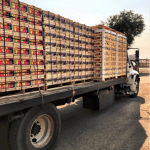


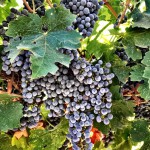
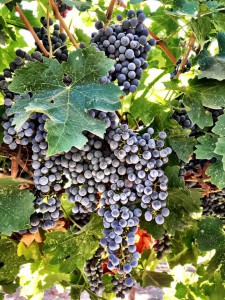

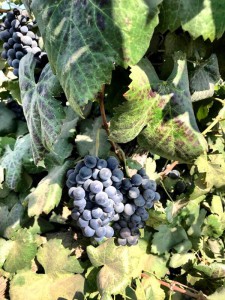
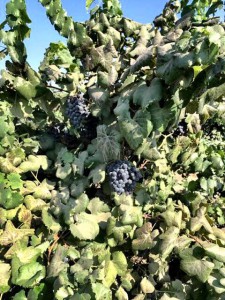













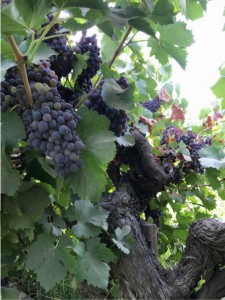

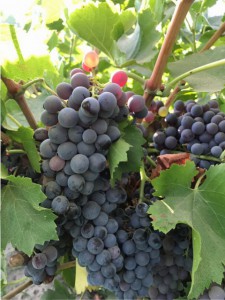


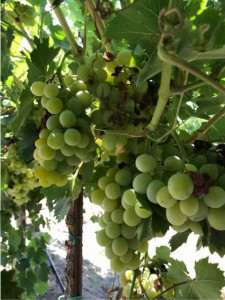
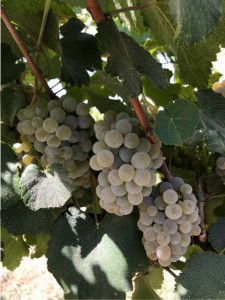
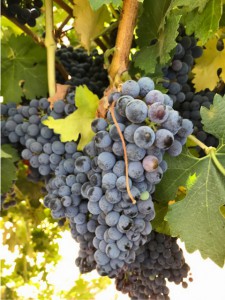
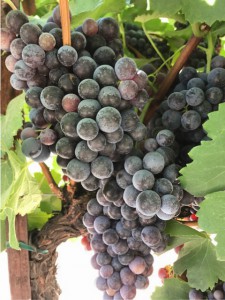
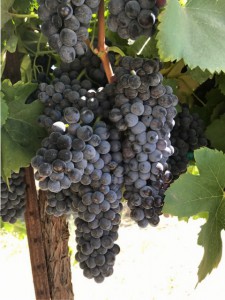
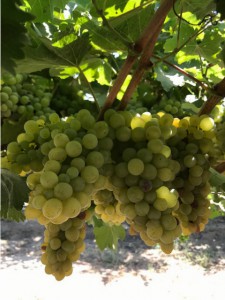

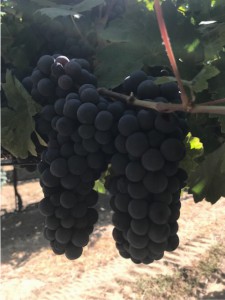
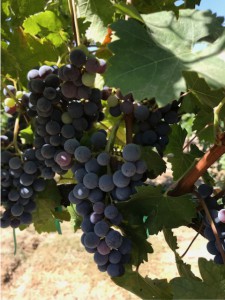
Recent Comments